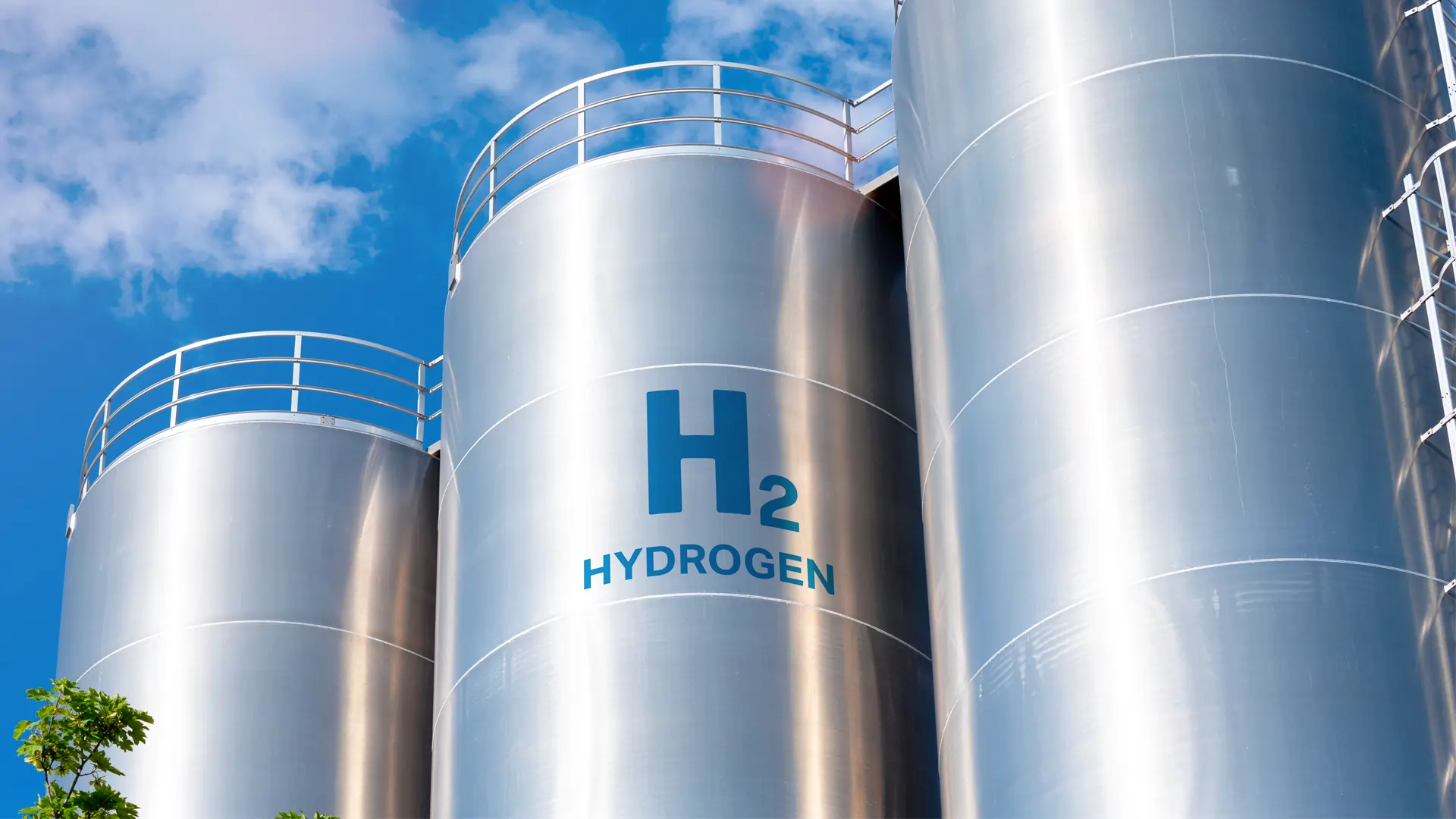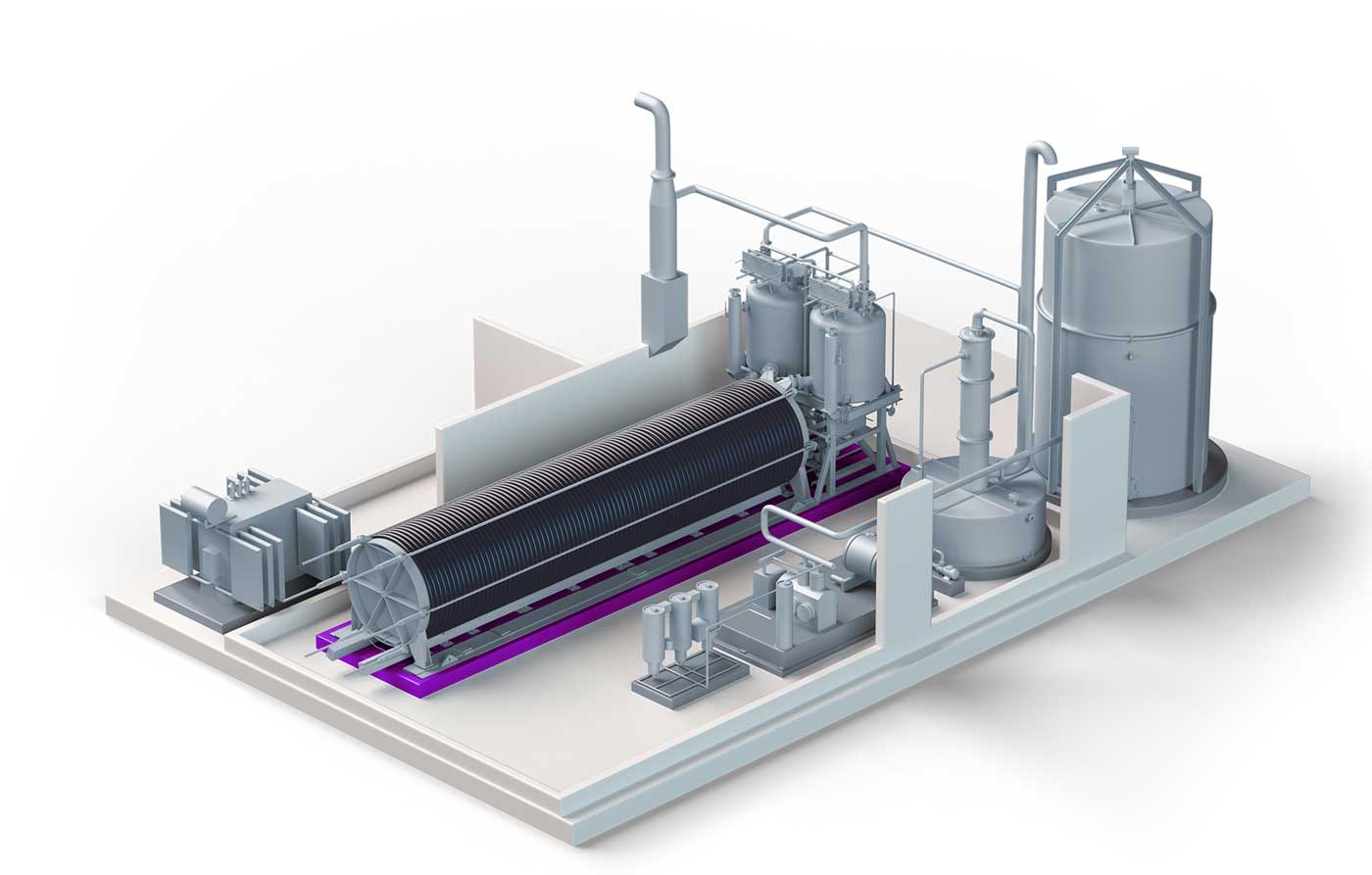Table of Contents
Key takeaways
- Hydrogen, a key element: Hydrogen, as the lightest chemical element, represents a clean and sustainable energy source. It is at the core of the global energy transition.
- Different types of hydrogen: Depending on the production method, hydrogen can be classified into various categories, including “gray,” “blue,” and “green,” with distinct environmental implications.
- Varied applications: Hydrogen finds applications in transportation, electricity generation, and energy storage, contributing to the reduction of greenhouse gas emissions and diversification of the energy mix.
Hydrogen, long relegated to the background in the energy sector, is now gaining increased attention and positioning itself as a promising alternative to traditional energy sources. Light, abundant, and potentially clean, hydrogen has all the makings to play a central role in the global energy transition. However, despite its many advantages, hydrogen is still surrounded by numerous questions and challenges to overcome. In this article, we will delve deeply into hydrogen, its applications, its benefits, and the challenges it presents.
What is Hydrogen ?
Hydrogen, a fundamental chemical element, proves to be a key player in the global energy transition. Its potential as a clean and sustainable energy source is generating growing interest, propelling this element to the heart of debates and scientific research. In this section, we will dive into the heart of hydrogen, explore its nature, its sources, its production, and the different types that exist, in order to demystify this element and understand its potential role in our future energy.
Definition and Properties
Hydrogen, represented by the symbol “H” in the periodic table, is the simplest and lightest chemical element in existence. It consists of a single proton and a single electron and is predominantly found in gaseous form under standard conditions of temperature and pressure. Its lightness and small size give it unique properties, such as great mobility and the ability to easily penetrate materials, making it both versatile and delicate to handle. Hydrogen is also an excellent conductor of heat and has a high energy density per unit of mass, although its energy per unit of volume is relatively low.
Sources and Production
Although hydrogen is the most abundant element in the universe, it does not exist in its pure form on Earth. It is mainly bound to other elements, as in water (H₂O), fossil fuels, or biomass. In order to use it as an energy source, it must be extracted and produced.
Hydrogen production methods are varied. Methane reforming is the most widespread technique, releasing hydrogen from natural gas. However, this method is criticized for its greenhouse gas emissions. Electrolysis, which separates hydrogen from oxygen in water using electricity, is a cleaner method, especially if the electricity used comes from renewable sources. Other methods include biomass gasification and thermochemical water splitting.
Types of Hydrogen
Depending on the production method and the energy source used, hydrogen can be classified into different categories, often designated by colors.
“Grey” hydrogen is produced from fossil fuels and is currently the most common and cheapest. However, its production emits a lot of CO₂. “Blue” hydrogen is also derived from fossil fuels but includes carbon capture and storage technologies to reduce emissions. “Green” hydrogen is produced from renewable energy sources, mainly via water electrolysis. It is the cleanest form of hydrogen but also the most expensive to produce.
By exploring hydrogen, its sources, its production, and the different types available, we lay the groundwork for understanding how this element can play a crucial role in our energy future. Its ability to be produced cleanly, its energy efficiency, and its versatility make it an ideal candidate to replace fossil fuels and help achieve greenhouse gas emission reduction goals. In the following sections, we will examine in more detail how hydrogen can be used in different energy sectors and assess the advantages and disadvantages associated with its use.
Uses of Hydrogen in Energy
Hydrogen, thanks to its versatility and cleanliness as an energy source, is increasingly integrated into various sectors of the energy industry. Its role is crucial in the transition to a low-carbon economy, offering innovative and sustainable solutions.
Transport
The transportation sector, one of the main contributors to global greenhouse gas emissions, is undergoing a transformation thanks to the integration of hydrogen. Fuel cell vehicles, running on hydrogen, emerge as a viable alternative to internal combustion engines. Unlike traditional vehicles, they emit only water and water vapor, thus significantly contributing to the reduction of air pollution and CO₂ emissions.
Hydrogen buses are already operating in several cities around the world, and hydrogen-powered train projects are under development. The automotive industry is not left out, with several manufacturers offering fuel cell vehicle models. However, despite these advances, challenges remain, such as the high cost of vehicles and the need to expand the infrastructure of hydrogen refueling stations.
Electricity Production
Hydrogen proves to be a key player in the production of clean and renewable electricity. Fuel cells convert hydrogen into electricity, providing an efficient solution to power buildings, data centers, and even electricity grids. Hydrogen can also be used in thermal power plants as a source of combustion, either pure or mixed with natural gas, thus contributing to the decarbonization of the electricity production sector.
The flexibility of hydrogen also allows it to address the intermittency of renewable energies such as solar and wind. By converting excess renewable electricity into hydrogen, it is possible to store energy for later use, ensuring a stable and continuous electricity supply.
Energy Storage
Energy storage is a major challenge in the energy transition, and hydrogen offers a viable and promising solution. Thanks to its ability to be stored as a gas or liquid, hydrogen allows for the storage of large amounts of energy over long periods, providing an answer to the storage issues associated with intermittent renewable energies.
Hydrogen storage technologies, such as high-pressure tanks and underground salt caverns, have already proven themselves and continue to develop. Moreover, hydrogen can be transported, whether by pipeline, ship, or truck, adding an additional layer of flexibility and accessibility to its use as an energy source.
Through these various applications in transportation, electricity production, and energy storage, hydrogen positions itself as a cornerstone of the transition to a sustainable and low-carbon energy system. Its benefits in terms of emission reduction, flexibility, and efficiency pave the way for a more extensive integration into the energy mix, contributing to the fight against climate change and securing our future energy needs.
Advantages and Disadvantages
Hydrogen, considered a future energy resource, presents numerous advantages but also disadvantages that are important to consider to ensure its optimal and sustainable use.
Environmental Benefits
The major asset of hydrogen lies in its minimal environmental impact when produced sustainably and used in fuel cells. Indeed, the combustion or conversion of hydrogen into electricity only generates water and water vapor, thus eliminating greenhouse gas emissions and atmospheric pollutants associated with fossil fuels. Moreover, hydrogen can be produced from renewable sources, such as solar or wind energy, contributing to the reduction of dependence on fossil fuels and diversifying the energy mix.
Hydrogen mobility, in particular, offers a clean alternative to gasoline and diesel vehicles, thus reducing emissions of NOx, SOx, and fine particles in urban areas. Similarly, the use of hydrogen in industry can contribute to decarbonizing sectors that are difficult to electrify, such as steelmaking or chemistry.
Efficiency and Costs
The energy efficiency of hydrogen is another of its advantages, especially when used in fuel cells for electricity production. These systems offer high yields and a constant energy production, regardless of weather conditions. In addition, hydrogen can be produced locally, thus reducing the losses associated with energy transportation.
However, the production, storage, and transport of hydrogen are associated with high costs. Although these costs have decreased over the past decades thanks to technological advances and increased production capacities, hydrogen remains more expensive than fossil fuels in many contexts. Significant investments are therefore necessary to develop the infrastructure and technologies needed to reduce these costs and make hydrogen competitive.
Challenges and Limitations
Despite its many advantages, the adoption of hydrogen faces several challenges and limitations. The production of hydrogen from renewable sources is limited by the availability and intermittency of these sources, requiring storage solutions and energy management. In addition, the majority of hydrogen is currently produced from natural gas, a method that generates greenhouse gas emissions.
The development of hydrogen distribution and refueling infrastructure is also a major issue, requiring considerable investments. In addition, safety issues related to hydrogen storage and transport, although manageable, must be addressed to ensure large-scale adoption.
Finally, the lack of standardization and the need to adapt or develop new technologies for the use of hydrogen in different sectors are also obstacles to overcome.
The Future of Hydrogen as an Energy Source
The future of hydrogen as an energy source is filled with optimism and challenges. Numerous initiatives are underway to promote its development, while technological innovations pave the way for new applications and improvements. Its role in the energy transition is also at the heart of discussions and strategic planning worldwide.
Initiatives and Investments
The hydrogen sector has experienced remarkable acceleration thanks to a series of government initiatives and private investments. Many countries have adopted national hydrogen strategies, recognizing its potential in decarbonizing various sectors. The European Union, for example, has launched the “European Hydrogen Strategy”, aiming to install at least 40 GW of renewable hydrogen production capacity by 2030. Massive investments are also being made to build the necessary infrastructure, such as hydrogen refueling stations, thus facilitating the adoption of fuel cell vehicles.
Private companies also play a crucial role, with an increasing number of players from the energy, automotive, and other sectors investing in research and development of hydrogen-related technologies. These investments aim to improve efficiency, reduce costs, and explore new hydrogen applications.
Innovations and Developments
Technological innovation is at the heart of the development of hydrogen as an energy source. Significant progress has been made in improving the efficiency of fuel cells, reducing the costs of hydrogen production, and developing safer and more efficient storage technologies. New hydrogen production methods, such as water electrolysis powered by renewable energies, are also being explored, promising more sustainable hydrogen production.
In parallel, innovations in hydrogen utilization are emerging. For example, hydrogen is being tested as a fuel for airplanes and ships, offering a potential solution for decarbonizing these hard-to-electrify modes of transport. Similarly, the use of hydrogen in industrial processes, such as steel and chemical manufacturing, is being studied.
Implications for the Energy Transition
Hydrogen is seen as a key element in the transition to a more sustainable and decarbonized energy system. Its integration into the energy mix can contribute to the system’s flexibility and resilience, storing excess energy produced by renewables and releasing it when demand is high or renewable energy production is low.
Moreover, hydrogen offers a solution to decarbonize sectors that cannot be easily electrified, playing a crucial role in achieving the climate goals set in the Paris Agreement. It also promotes energy security by reducing dependence on imported fossil fuels.




